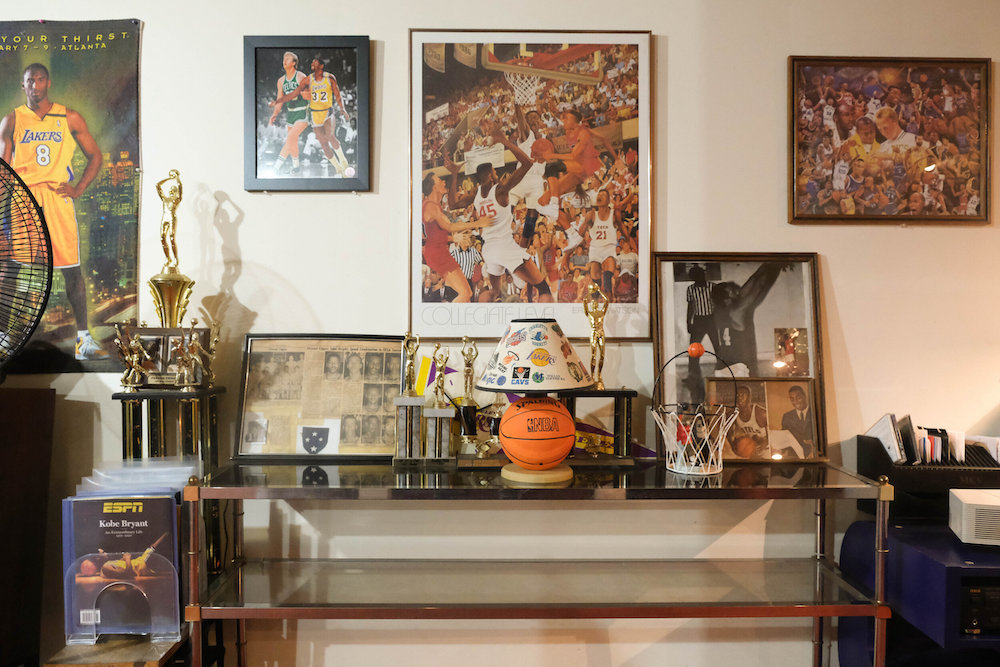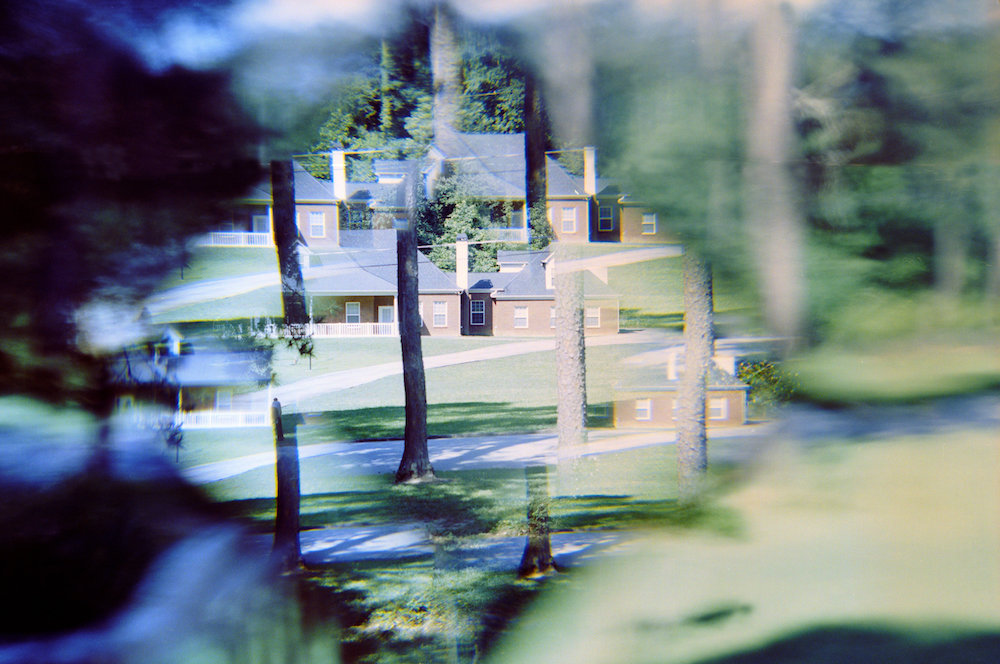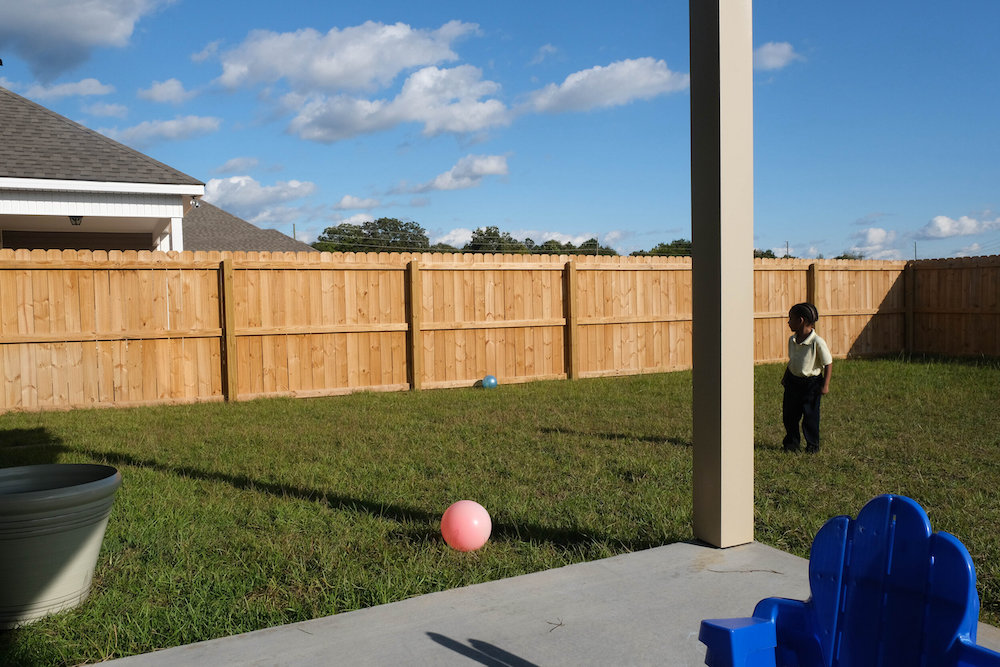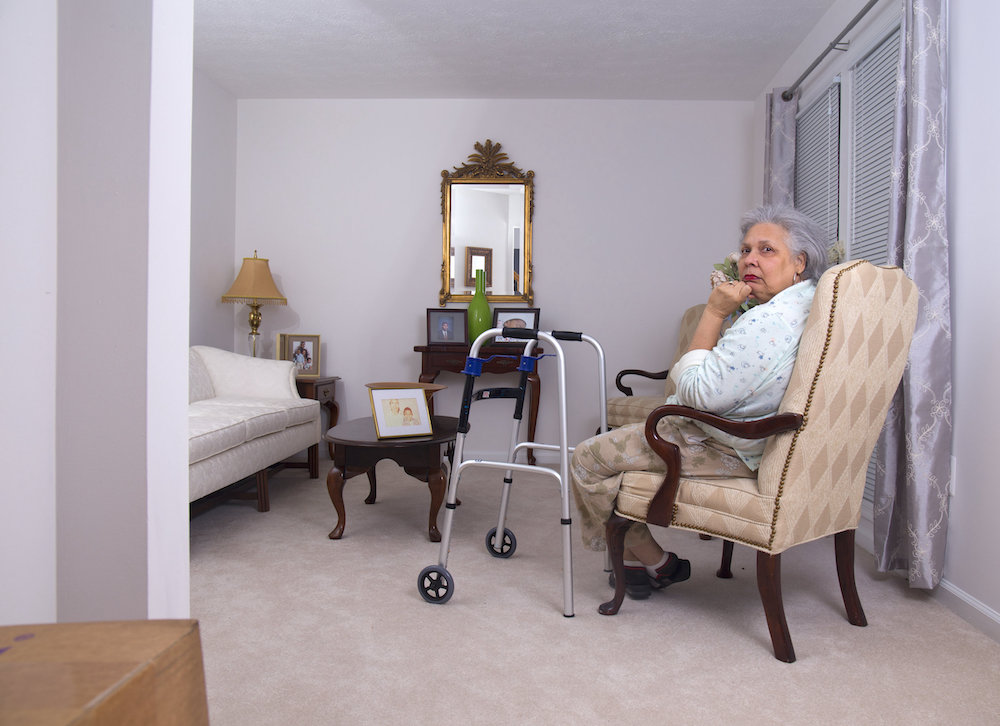Akea Brionne Brown: On Domestic Life
While a photograph inherently references the past, intentionally making images that reflect one’s own history can be a complicated affair. Our lives are rarely graced by absolutes. Complexity and uncertainty often outweighs stark definition and as the fluidity of memory further abstracts our past it can become difficult to accurately describe one’s lived experience. The inclination is to look back and recall when in fact the answer might be to examine the contemporary. In her series Black Picket Fences, photographer and writer Akea Brionne Brown explores the lives of the suburban black middle class. In part inspired by her own upbringing, Brown’s images give context to a population often overlooked, addressing issues of lifestyle, representation, and ideological racial space.
Akea Brionne Brown (b. 1996, New Orleans, LA) is a photographer, writer, curator, and researcher whose personal work investigates the implications of historical racial and social structures in relation to the development of contemporary black life and identity within America. With a particular focus on the ways in which history influences the contemporary cultural milieu of the American black middle class and the history of urban and suburban planning; she explores current political and social themes, as they relate to historical forms of oppression, discrimination, segregation and black identity in the American cultural landscape. Her work also explores the connection between black familial relationships, space, and the role of black female identity through the lens of generational racial and sexual trauma.
Akea Brionne has received the Visual Task Force Award from the National Association of Black Journalists. Her work is also featured in the Smithsonian’s Ralph Rinzler Collection and Archives. She was announced the 2018 Documentarian of Color by Duke University. Her series, Black Picket Fences, was acquired for their permanent collection, and is on preserve at the David M. Rubenstein Rare Book & Manuscript Library. She was nominated for PDN’s 30 (Photo District News) 2018: New and Emerging Photographers to Watch. Brown was also named the 2019 Janet & Walter Sondheim Winner.
In 2019, Akea Brionne co-founded Shades Collective.
Akea received her BFA (2018) from the Maryland Institute College of Art, in the dual degree program of Photography and Humanities. She is originally from New Orleans, Louisiana and currently lives and works in Baltimore, Maryland.
Black Picket Fences
Black Picket Fences encompasses environmental portraiture and documentary photographs of contemporary black households and the everyday lives of those who inhabit them. This body of work aims to highlight an often overlooked group in contemporary American culture: the black, suburban middle class.
While this group has not entirely been forgotten, it is hard to define. For some, these photographs might be the first and most intimate form of contact or interaction they might have with a black household. The work is largely inspired by one central question: If the ethos of the suburban landscape is largely understood as an ideologically “white” space, how do we begin to discuss the paradox of the black suburb and the ways in which is challenges the concept of whiteness and the suburban lifestyle?
The images in Black Picket Fences reference the black suburban home and family life. I’m curious about your own upbringing. Did you see aspects of your early life mirrored in this series or were the scenes you documented entirely new experiences?
The series was largely inspired by my own upbringing. The images and the environments in the series are the scenes I was seeing in my own life, but wasn’t necessarily reflected in most depictions of middle class and suburban America. I was educated and socialized in predominantly white suburban communities, but when I went home, it was a predominantly black suburban community; and I felt the disconnect between what is often depicted when referencing the suburbs and what I was actually seeing in the suburbs. So I made a point to document what was true to me, and to vary the depictions of what black life looks like; which is often polarized as being only within poverty, drugs, and incarceration or entertainment. The black experience is not homogeneous, and neither is the suburban experience.
You mention in your bio that in addition to photography, writing is also a part of your practice. Which came first for you; the photograph or the written word? How do these mediums influence one another within the context of your work?
I believe in many ways, the written word came first. Of course with school instruction, there is an emphasis on writing and English courses that supersedes any other course. In order to graduate (at least in my school system) you had to take English classes throughout your last semester in high school, it was the singular required class. I was about 2-3 years ahead in most of my academics from elementary school, so I was able to really curate my junior and senior year schedules for my advanced photography courses, and I was a teacher’s assistant for a photography class as well. But I still had to take English. I think this really helped me develop a voice within writing at an early age, but it also helped me to understand writing as an art form and not just a means of communication. As I broke away from the rigidity of educational writing, I started to realize the beauty of language itself and still believe that writing about my work is what has enabled me to better understand the imagery I create. So technically, the written word came first, and in my research practice now, it still comes first. Photography is what I like to call, my final paper; written with images, instead of words, but very much informed by and in conversation with the words.
I see that you earned your BFA in a photography and humanities dual degree program. How did your studies beyond the world of photography influence your way of seeing, approaching, and completing image based projects?
As a dual major, I had more credit requirements to graduate, as well as less photography electives. As a result, I really began to think about the ways that my research and writing within humanities would allow me to engage deeper with my photographic work, with the understanding that much of my time was being consumed by the humanities side of my practice. It takes a lot of time to really dissect a piece of writing, theory, critical analysis! Though, it has enabled me to think about my photographic work on a multitude of layers. I’m not just thinking about the image; I’m also thinking about how it will be viewed and by whom, and how their own understanding of space, people, culture, history, etc. would be informing their level of engagement or dis-engagement with my work. How does a space affect the ways someone will be able to engage with my work? How does scale affect their engagement? How does the history of accessibility within photography limit or expand who gets to engage with my work?Having a deeper understanding of the themes and histories that my photographic work was exploring, allowed me to tap into the creation of the images with a level of ease. Because most of the heavy, emotional work that goes into making, doesn’t actually take place in the images for me. In short, it has allowed me to truly think about my practice, as a practice. Before, I was very much steeped into the aesthetics of photography and what other photographers had to say. But once I honored that it was much more than that for me, that’s when the work really started to speak for itself.
Whenever I come across a new body of work I find myself wondering about access to subjects and spaces. How did you come to know the people portrayed in your series?
When I began shooting Black Picket Fences, it manifested on a whim. I was having trouble thinking about what to focus on for my senior thesis. I had just had a critique and had begun to explore self portraiture and racial stereotypes against black women. I was pretty excited about making the work, but wasn’t sure if I could make the work for an extended period of time. So as I was driving to go pick up mail from my Uncle’s house, I decided I would photograph him. I had no idea which path I was going down for my thesis, so I decided taking photos of someone other than me would maybe help. The first image of the series was taken that night. It’s a portrait of my uncle in his home, the home I grew up in, and I was instantly grasped by the image. I became aware of how normal it was to me, but how little I had seen portrayals of that scene within contemporary photography. So I started with the people I had the most access to, my own family. From there, I would share the images with family friends and see if they were interested in being photographed, and then I moved on to doing the same with neighbors. Most were very open to being photographed, as it’s not something they get asked to do often, so I didn’t meet much resistance!
While making these images was there a specific encounter or home visit that particularly stood out to you? Describe the scene.
There was a home visit I did with my mother’s neighbors who lived across the street from here. I had seen them numerous times, but hadn’t talked to them much. I asked my mother to explain my project and see if they’d be interested in being photographed and they agreed to have me come over. At this time, they were actually in the process of moving out, so I was sort of shadowing them in their move. The family consisted of a mom, dad, a daughter, a son, and they were expecting another baby as well. I remember being in the basement watching them get furniture together to move out, and I spotted a frame laying against the wall. I had multiple images in it, and the one at the center was the dad holding his daughter when she was a baby. It was such a beautiful and quiet moment, but also a moment I had rarely seen before. Around those photos were images from the couple’s wedding, and as I stood there watching them, they were moving around me preparing to move their family into their next chapter. It was a small moment, but a beautiful one that really stuck with me.
Do you see Black Picket Fences as an ongoing project or have you moved on to other creative endeavors. If so, what are you focusing on now?
For now, I have moved on to working on other projects. COVID did halt this series, for obvious reasons. Though in many ways, I do see this as a project that will never truly end. I think I will always want to continue this series, because it truly started out as a passion project and one that I think I needed for myself, just as much I thought other people needed to see it. But I feel that way about numerous aspects of black life, so I do believe it is one of many for me. Right now, I am working on a large project in collaboration with the Mississippi Museum of Art and the Baltimore Museum of Art, which explores the Great Migration in relation to my family’s personal history. I’m very excited about it, and it is in many ways an extension of the themes explored in Black Picket Fences.
Posts on Lenscratch may not be reproduced without the permission of the Lenscratch staff and the photographer.
Recommended
-
Shinichiro Nagasawa: The Bonin IslandersApril 2nd, 2024
-
The International Women in Photo Association Awards: Lorraine Turci: The Resilience of the CrowMarch 16th, 2024
-
The International Women in Photo Association Awards: Rayito Flores Pelcastre: Chirping of CricketsMarch 14th, 2024
-
The International Women in Photo Association Awards: Louise Amelie: What Does Migration Mean for those who Stay BehindMarch 12th, 2024
-
Brandon Tauszik: Fifteen VaultsMarch 3rd, 2024












































































